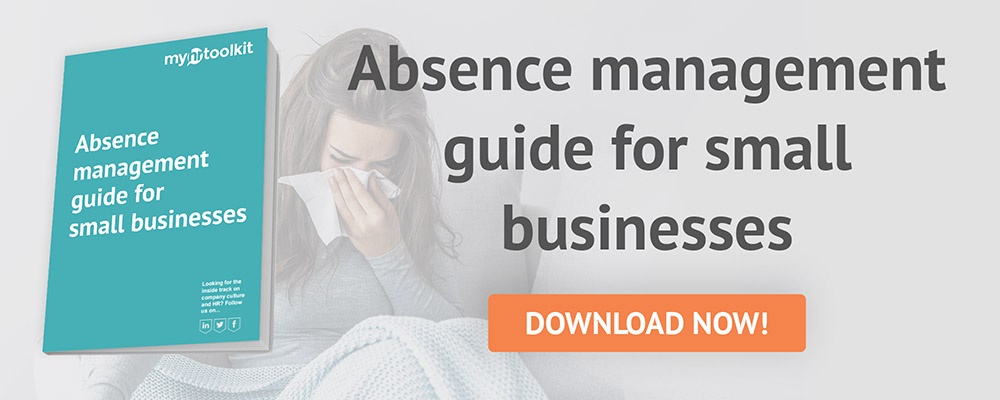Managing employee absence can be a difficult field to tackle and this article by Toby Pochron of Freeths LLP is here to help break down each type of common absences.
When thinking of staff absence, the first thoughts would normally be of holiday or sickness absences. However, there are several other types of absences which need to be managed. These absences largely fall within three categories:
- Authorised absences
- Unplanned absences
- Unauthorised absences.
Managing employee absence can be a difficult field to tackle and this article is here to help break down each type of common absences.
Authorised absences
These tend to be the easiest absences to manage as they are pre-agreed with the employee, therefore there tend to be fewer managing issues which arise from them.
Holiday or annual leave
The starting point for this is that all workers are legally entitled to 5.6 weeks paid holiday a year, for those workers who work 5 days a week, this would be 28 days. This is calculated differently for part time workers and irregular hours workers.
Tips for managing holidays:
- Review your contracts and policies to consider how bank holidays are included in annual leave entitlement, they can either be included in the 5.6 weeks or on top of. Further consider how you define bank holidays as to whether new ones would be included.
- Keep on top of the amount of leave employees are carrying over. If there is a trend of a lot of leave being carried over then investigate why your employees are unable to take their entitlement. Taking holiday is a key way to ensure that your employees are getting the break and unwinding they need.
Family leave
A quick rundown of the rights relating to family leave, dependent on employees being eligible, are:
- Appointments:
- time off for antenatal appointments (paid)
- time off to accompany a pregnant woman to an antenatal appointment (unpaid)
- time off to attend adoption appointments (paid for up to 5 appointments).
- Leave:
- Maternity/Adoption: up to 52 weeks (26 weeks ordinary maternity/adoption leave and 26 weeks additional maternity/adoption)
- Paternity: up to 2 weeks consecutive leave
- Amount of notice required to take leave:
- Maternity and Paternity: At least 15 weeks before the expected week of childbirth
- Adoption: Seven days after the date on which the employee has been told they have been matched with the child or as soon as reasonably practicable. For pay, it must be at least 28 days before the day they wish the payments to begin.

- Shared parental leave: This gives new parents the option to cut short maternity or adoption leave and allow the other partner to take the additional untaken leave.
- Parental leave: This is a personal right for employees to the entitlement to up to 18 weeks of unpaid leave per child, which can be taken up to their 18th birthday.
Tips for managing family leave:
- Encourage employees to notify you as soon as possible of any planned family leave so that you are able to prepare for their time off.
- Agree with the employee how often they wish to be contacted so that they can still feel involved with the organisation but not overwhelmed.
- Employers have the option to enhance these three areas of leave and there is a movement for more employers to do so as it shows a commitment to encouraging diversity and inclusion in the workplace.
Career break
While there is no legal right to a career break it may be an option to consider if an employee wishes to take a longer period away from work. The best way to agree the terms of a career break may be through an additional agreement which should be tailored to the situation.
Time off for medical appointments
There is no general right for employees to take time off for medical or dental appointments if they are not unfit, it is down to employer discretion.
Tips for managing: If an employee starts to have several medical appointments, it may be an indicator that the employee is becoming seriously unwell. Try to find out how the employee is doing through informal welfare discussions with them and consider if the requirement to make reasonable adjustments, such as allowing frequent medical appointments, is triggered.
Public duties
Employees are entitled to time off to carry out certain public duties, but it is up to employer discretion as to whether to pay for the time off.
Unplanned absences
These are absences caused by unpredictable events, for which an employer cannot be notified of in advance but are still able to be authorised.
Sickness and injury
The Office for National Statistics published in April of this year that the sickness absence rate in the UK 2021 rose to 2.2% in the UK. This is the highest it has been since 2010. An extreme case of this is in South Ayrshire, where council employees over the period of 12 months had a combined time off of 125 years due to sickness.
-Oct-28-2022-03-15-41-1574-PM.png?width=1500&height=750&name=Untitled%20design%20(2)-Oct-28-2022-03-15-41-1574-PM.png)
Normally, sickness absence is short-term and does not become a problem, but what do you do when it tips over to becoming an ongoing concern for the organisation?
- Try and get as much information from the individual as possible and discuss their illness with them through a welfare meeting. Consider phased returns to work or other adjustments which may assist them.
- If the situation persists, carry out formal meetings under a sickness absence procedure.
Tips for managing: Try to keep an eye on home-working employees, increasingly they will simply work from home while unwell instead of taking time off. It is important to try to stop this to help prevent a culture which fosters burnout and makes illnesses last longer.
Adverse weather and travel disruption
Employees may be prevented from getting to work by weather, strikes or flight cancellations, or delays.
Tips for managing: Ensure you have a policy in place to have a company-wide approach to these events. While it is unclear if employees are entitled to pay, paying employees who cannot attend work will help improve employee relations, help stop resentment towards employees who are able to work from home, help prevent employees from falsely claiming sick leave, and lower legal risk of employees claiming deductions from wages.
Compassionate leave
there is no general right to compassionate leave but there are some rights for specific situations as detailed below. Employers may wish to consider expanding on the below to offer compassionate leave in wider situations.
- Parental bereavement leave: A right to one or two weeks off work following the death of a child, paid at a statutory rate.
- Time off for dependants: Entitlement for employees to reasonable unpaid time off work to deal with situations impacting their dependants.
Tips for managing unexpected absences: It is important to make it clear to employees what they need to do in order to take any of the above times off from work especially in the case of an unexpected absence. The easiest way to do this is to have comprehensive policies.
Unauthorised absences
To complete the set of types of absences, there are unauthorised absences, which is when an employee just does not show up and does not provide a reason for it. It could be lateness on a regular basis or just not showing up for days at a time.
The starting point for managing employees who have unauthorised absences is to contact them to let them know their absence is unauthorised and asking for them to explain the absence. If they then attend the workplace or respond, carry out an informal meeting with them. It may be that there is a more serious underlying cause for the absences such as health issues or that they need support. Do not jump straight to a disciplinary process without finding out or trying to find out why they are absent.
If the absences continue or they do not supply you with an acceptable reason for the absence, then it is time to start a formal disciplinary process and investigate the absence as a potential misconduct.
Read more from the myhrtoolkit blog

Written by Toby Pochron
Toby Pochron is a Senior Associate in the Freeths LLP Employment Law department. He was a Partner in the Employment Law department of Ironmonger Curtis.


 Holiday Planner
Holiday Planner Absence Management
Absence Management Performance Management
Performance Management Staff Management
Staff Management Document Management
Document Management Reporting
Reporting Health and Safety Management
Health and Safety Management Task Management
Task Management Security Centre
Security Centre Self Service
Self Service Mobile
Mobile.png)



